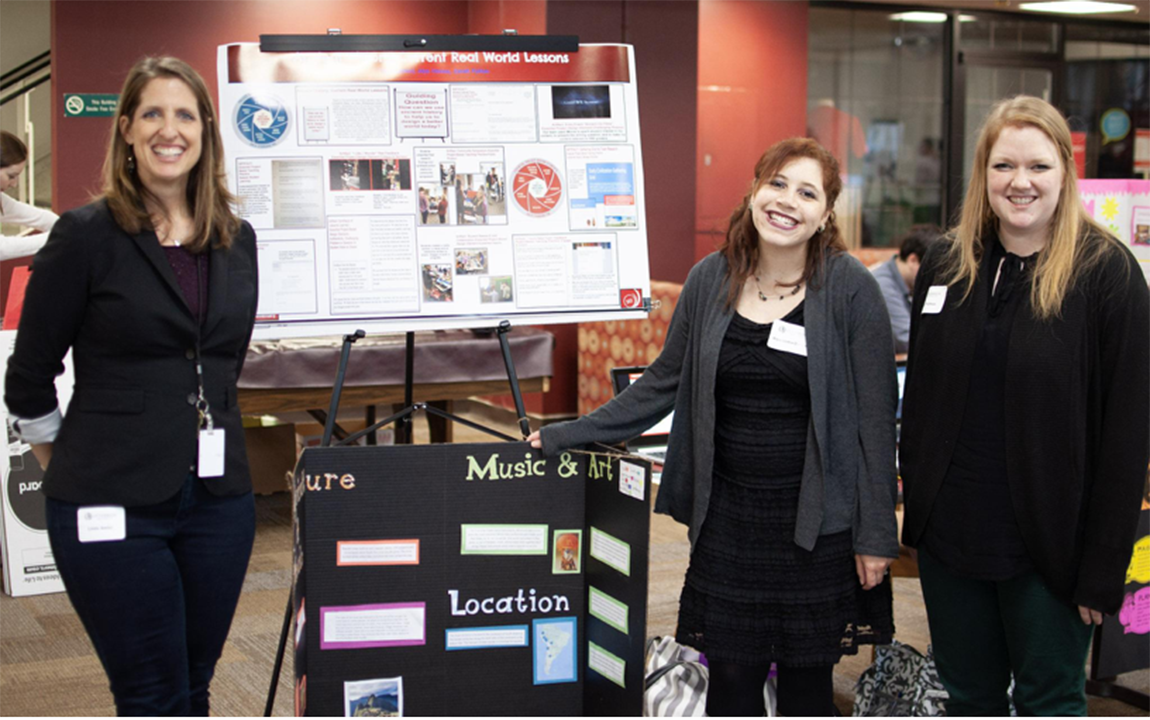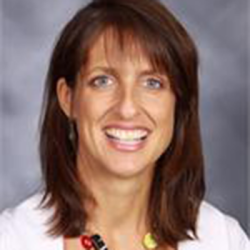
BIE’s special project Out of the Gate: Preparing Preservice Teachers to Use PBL. Through PBL, (Out of the Gate) supports teacher education programs (TEP) to integrate Project Based Learning into their preservice programs. The goal is to make sure preservice teachers are ready to teach using PBL from their first year in the classroom. We do this by training a cohort of preservice teachers, their cooperating teachers and TEP faculty each year for the three years of the grant (made generously by the ECMC Foundation).
Linda Amici is one of those cooperating teachers who came to Out of the Gate with previous PBL experience. She was a cooperating teacher in 2017-18 and returns enthusiastically to Out of the Gate in 2018-19 with TEP partner Otterbein University. Linda is a PBL champion in school and district--Alcott Elementary in Westerville City Schools (OH)--where she teaches 5th grade. Below Linda tells a story of one her favorite authentic PBL moments in her classroom.

“Is there a cure for Down’s Syndrome, and if not, what can we do to fix it?” This is the driving question that my 5th grader Lauren was inspired to ask for her passion project as a result of reading the book Wonder during her literature group. Because we use PBL regularly in our classroom, she knew how to use inquiry to ask and answer her own questions. She took her research seriously, using reliable sources and interviewing experts on the subject. Lauren’s project expanded her science knowledge, especially her understanding of genes and DNA. As she developed her final product—a presentation at a community event where the leaders of our school district, community and local university would hear her ideas and those of her classmates—she asked her classmates for feedback, reflected on that feedback and made revisions.
Once Lauren finished the presentation to her peers, she solicited their cool and warm feedback, then left an opportunity for questions. There were a myriad of them, which she was able to answer as a result of her research. She scored well on her presentation rubric and the class was an engaged audience. Just as we were ready to break for lunch, Giulia raised her hand to ask the last question. “Ok,” she said, “so you talked about how some children who have Down’s Syndrome get left out?” Lauren nodded.
“Well, what are we going to do about that?”
The bell rang.
No one moved.
Imagine, it’s 12:30 in the afternoon.
A group of 29 hungry fifth graders.
And not one student made even a single motion toward the door.
They were too busy thinking.
What ARE we going to do about that?
Lauren and her peers jumped right into brainstorming ideas to address the question. At this point, it appeared that every child in the class would have skipped lunch to consider the question. I had to stop them, reassuring them that we would continue after lunch. Reluctantly, they lined up.
Inspired to Take Action
After lunch, we reconvened to look deeper into the answer to Giulia’s thought-provoking question. They began to discuss what the students that they had come in contact with in the hallways at Alcott Elementary might be feeling, practicing taking others’ perspectives. They began to APPLY the information that Lauren had uncovered in an empathic way to their own sphere of influence. A majority of the students felt that a missing piece for the handful of students in our elementary school’s special needs units with Down’s Syndrome was the opportunity to spend informal, play/conversational time with other students of the same age group.
Here is a copy of the letter that I received the next day from my students to pass along to our special needs teacher:
Dear Mrs. Salsbury,
Lauren in our class did a presentation on Down Syndrome this week, and she talked about how sometimes kids with Down Syndrome don’t get included. Our class started to talk about how we are going to try and fix that. We want to invite the kids in our school with special needs to have special days with our class. My classmates and I came up with a few ideas: inviting them to spend lunch and recess with us, doing some hands-on activities and experiments with them, possibly inviting them to specialist classes with us, or going to “The Nest” and having fun activities there. This is all just suggestions now, but we would really like to get something together.
Sincerely,
Giulia, Lauren, Charlotte, and Mrs. Amici
The following week, Mrs. Salsbury, our amazing special education teacher, brought Maggie in to meet our class. Maggie is a non-verbal student who communicates using a special technology device. As she shared a bit about herself, the fifth graders listened attentively. Immediately after she was finished, these ten-year-olds began to make connections with Maggie. The smile on her face spread from ear to ear.
As the year unfolded, these compassionate students worked hard to recruit, schedule and train their friends to help daily in the room for students with multiple disabilities. They met each day with Maggie and her friends. All of the students involved learned a great deal, not only about how to better interact with individuals with special needs, but about the joy of connection with those different from them, about how to show care and compassion and empathy. Their relational and communication skills were challenged in diverse ways. Critical 21st century success skills were refined, such as critical thinking to plan their schedule and plan and collaborative problem-solving to adapt games so everyone could participate.
These ten year olds discovered strengths and interests that they would not have had opportunity to discover, had it not been for that one thought-provoking question, “What are WE going to do about that?” This summer, these same students assisted with special needs summer programming and have already connected with the special needs programs in their middle school to see how they can help continue to bridge the gap.

